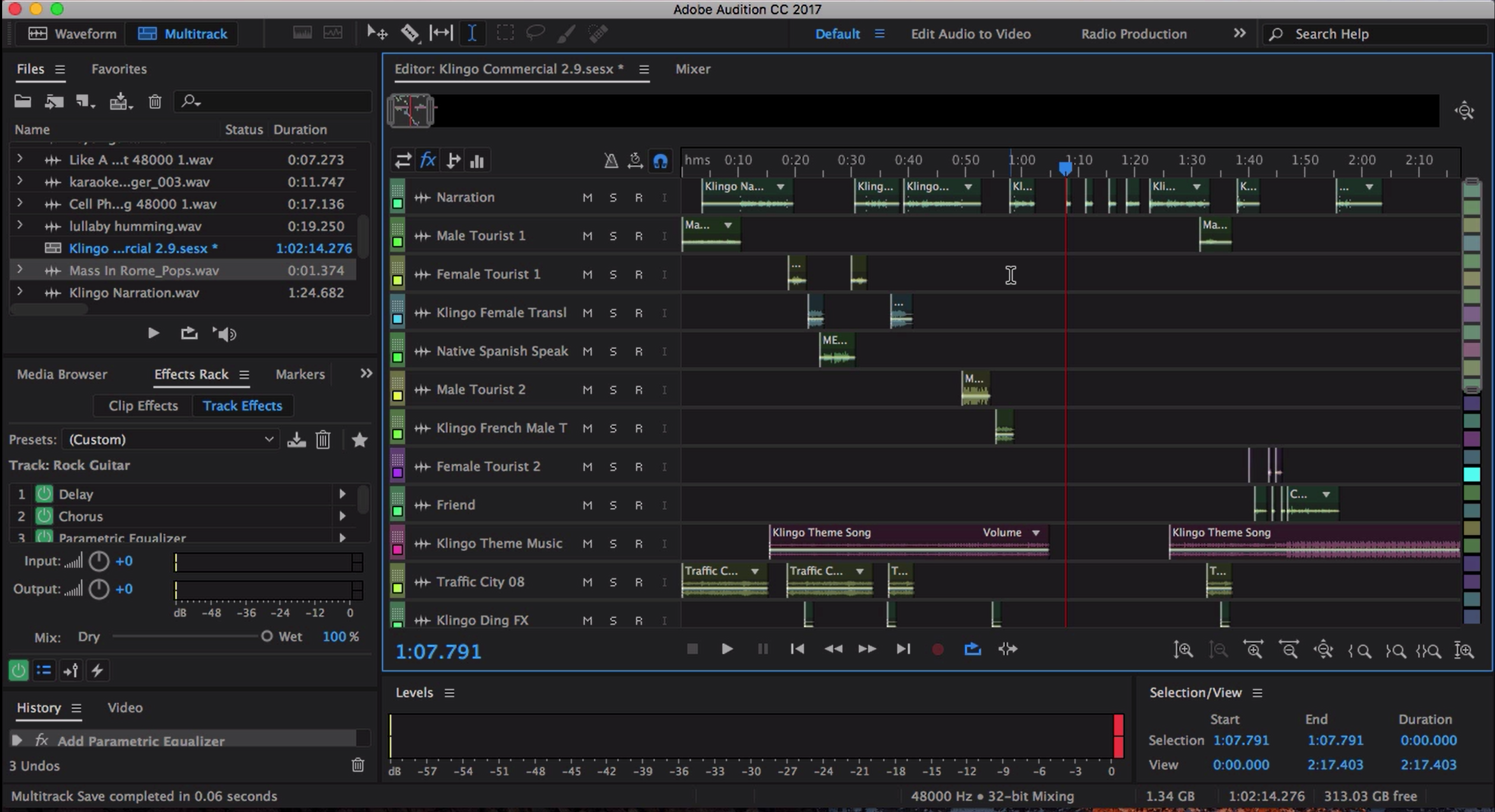

- #ADOBE AUDITION CC 2015 SHOW VOLUME ADJUSTMENT IN WORKSPACE SERIES#
- #ADOBE AUDITION CC 2015 SHOW VOLUME ADJUSTMENT IN WORKSPACE WINDOWS#


Restoring bad recordings into usable or even good, clear audio files can mean proving an alibi in court, understanding Edison’s voice, or hearing a whale’s song.
#ADOBE AUDITION CC 2015 SHOW VOLUME ADJUSTMENT IN WORKSPACE WINDOWS#
In forensics and archival industries, Audition’s Spectral Frequency Editing environment allows selecting specific sounds and manipulating recordings as easily as using Windows Paint. These folks had no time for creating multitrack projects, importing assets, or rendering a mixdown before exporting to the particular flavor of MP2 or WAV their playback automation system supports! Recording a single report quickly, deleting the “umm”s as fast as possible, and exporting directly to disk enabled them to work as fast as the news happened. One of earliest adopters of Audition (and its predecessor, Cool Edit Pro) were radio journalists under exceptionally tight deadlines. Now, why on earth would Audition support modifying your files? Surely someone must be off their medication to allow such a tool! Not really. This distinction can be tricky for users used to non-destructive NLE or DAW applications to wrap their heads around. This means that if you make a change to a file in Waveform view and click Save, you are usually overwriting the contents of the file you edited. Many effects and tools available in this workspace require multiple passes or are not real-time compatible, and result in changes to the actual data recorded in an audio file. Waveform view, on the other hand, is a destructive waveform editing workspace capable of in-depth analysis and sample-accurate selections and processing. Multitrack view is often the workspace of choice for video post-production, podcast and radio show creation, and musical composition. This workflow only uses existing media or creates new media, but never makes changes to the original files. (We’ll cover Compression in another post, so don’t worry about it yet.) Multitrack editors re-arrange pieces, modify timing, and adjust loudness levels for each piece until perfect, then render their project into a final audio file – often WAV or MP3. Multitrack offers a non-destructive clip-based workspace, where you arrange new or imported audio files on a timeline, blending and fading between tracks, and adding real-time processing effects like Reverb or Compression to your clips. MULTITRACK Īudition has two primary editing environments. But apart from a few new words and slight conceptual differences with other production tools, crafting incredible-sounding audio with Adobe Audition can be a simple and fun experience! WAVEFORM vs.
#ADOBE AUDITION CC 2015 SHOW VOLUME ADJUSTMENT IN WORKSPACE SERIES#
It is my goal with this ongoing series to cover the topics that help our readers become masters with Audition and audio editing.Īudition is a deep application with a long history and a wide variety of users, so it’s no surprise that its terminology and interface can feel intimidating to artists and professionals from other disciplines. Our documentation and promotional teams do a great job showing off what’s new in each release, but we don’t offer a lot of in-depth training material for Creative Cloud members just getting started. I’ve been meaning to start a blog series covering basic Audition workflows and tools for some time now.


 0 kommentar(er)
0 kommentar(er)
